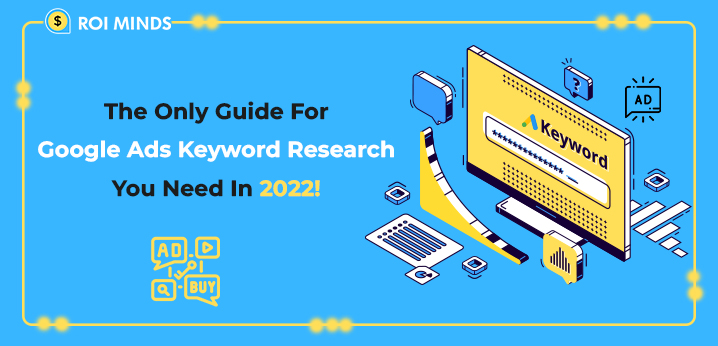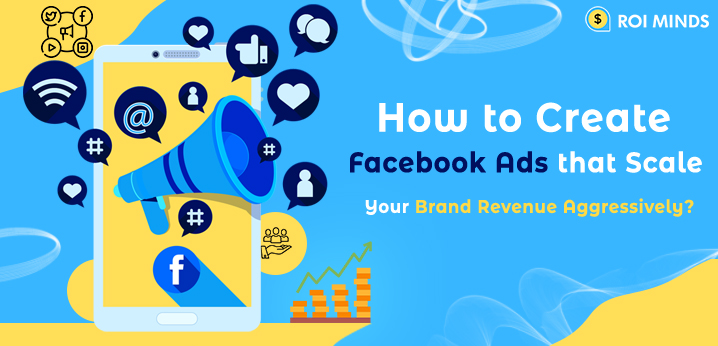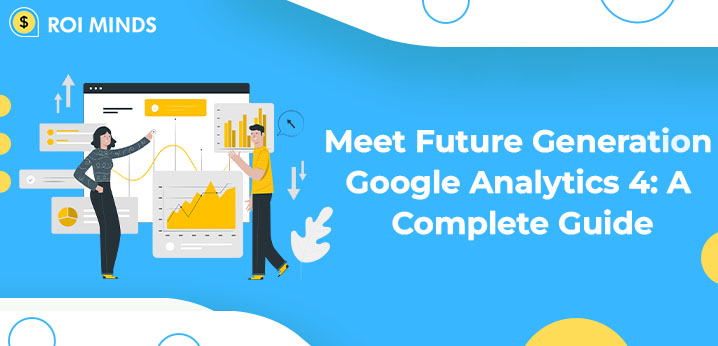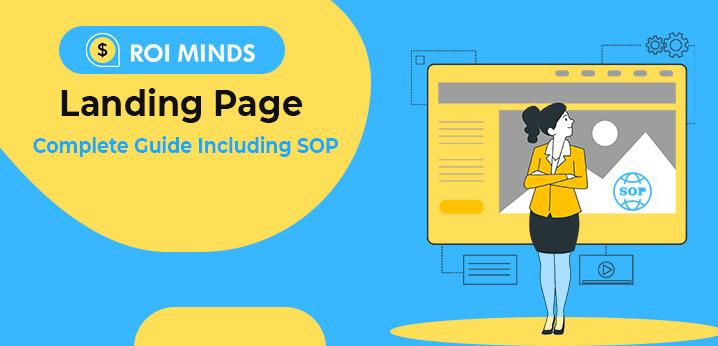If you want to improve your Google Ads conversions, you must have the right strategy. Competitors from all over the world are vying for the same prospects and customers in today’s world. On the other hand, building a viable plan is easier said than done.
A great eCommerce pay-per-click (PPC) campaign includes various elements such as ad copy, relevance, images, landing pages, and follow-up techniques. However, the first and perhaps most important step is identifying the right keywords to target and the best keywords for Google ads.
Knowing how to shortlist and target the best keywords for Google Ads campaigns will allow you to reach more interested customers with relevant content and offers while spending less money and wasting less time. This way, you can gain a competitive advantage in your market.
How To Choose the Best Google Ads Keywords?
This article will go over tried-and-true keyword strategies that you can use right away. Let’s get this party started.
Account Structure: High Buying Intent vs Low Buying Intent
The account structure and finding the right keywords are two of the most important aspects of your paid search process. When your keywords, ads, and landing pages are appropriately structured, they align with your business goals.
Finding the right Google Ads strategy and building the right Google Ads account structure can feel like looking for a needle in a haystack. Depending on your objectives, budget, location, company size, and industry, various approaches are available. So, depending on your specific situation, let’s talk about different ways you might want to structure your campaigns.
Do you believe you should target high search volume or low competition keywords or high buying intent keywords or low intent keywords? We’ll begin with two different scenarios, both of which use high-intended keywords:
A Scenario – This ad group contains a single keyword with a search volume of 100. The cost per click (CPC) is set at $2.
B Scenario – This ad group contains ten keywords, each of which has a search volume of 1000. The CPC is $1 per click.
Understanding the Relationship Between Keyword Search Volume and Keywords Buying Intent is Important:
Remember that keyword search volume refers to the number of times a particular keyword was searched for in a given month.
That is why this is such an important consideration. A keyword must have many searches to be worth targeting and paying for. Otherwise, it could indicate that not enough people are interested in that specific keyword or phrase, resulting in low traffic to the offer.
However, Scenario B above depicts a possible solution to the low traffic. You can target multiple low-volume keywords instead of bidding on high search volume keywords (which are more expensive). This method broadens your audience, website traffic, and the ROI depends on the conversion rate and ROAS as the intent of such keywords can be broad and hard to fit in the buying intent segment. You can’t show the same ad to other people who use different search terms as different search terms have different intent and so the ad should be personalized as per the search term to get a high-quality score and overall account score that helps in the lower CPC and higher Conversion rates.
This strategy of bidding on multiple low-volume keywords to show your ads to a sufficient number of people may be more brand-building side or driving top of the funnel traffic in the awareness stage of your google ads marketing funnel. High intent keywords (those used further down the sales funnel and closer to converting) frequently have lower volume than low-intent keywords.
So you’re probably wondering how to choose the best keywords for Google Ads. Both of the above scenarios are correct, but both scenarios are equal when viewed from a broader perspective.
Scenario A has one high buying intent keyword, while Scenario B has low-intent high search volume keywords. Because both scenarios are equal:
1 high buying intent keyword (100 high search volume keywords) = 10 low search volume keywords (each of 1000 Search Volume)
For example, at any given time, there are likely to be more people searching for “types of roofing materials” than people searching for “buy a new roof now.” While the high intent “buy” keyword will likely result in higher conversions, it will cost significantly more to bid on, and your search volume will be significantly reduced.
Criteria for Choosing the Appropriate Keyword Search Volume
As you may have noticed, both of the account structures discussed above can benefit your Google Ads campaigns. But how do you know which one is best for your company?
Consider the following key factors to consider when selecting keywords based on their search volumes and intent type:
Is There a High Search Volume for Your Niche?
You cannot use all keywords for Google Ads in any industry, and different keyword volumes will be more effective in different buying stages and offers. For example, a highly specialized service like laser eye surgery is unlikely to receive as many conversions as a generic product like eye surgery.
What Is the State of Keyword Competition?
There is no excuse for not having at least a cursory understanding of keyword competition, thanks to a plethora of keywords research tools — both free and paid to find the best keywords. While higher intent keywords can drive more conversions than traffic to your landing page, they are much more competitive and expensive than low intent keywords. Finding the right keywords considering your Google ads marketing objective is the key and science of a successful Google ads program.
What Level of Buying Intent Does the Keyword Have?
You must ask yourself what your objectives are for the ad campaign. If you just want to “get your name in front of people” and do a broad awareness campaign, low intent high search volume keywords are the best like informative, how-to guide, examples, etc. However, if your campaign is heavily focused on “direct response,” you don’t want to waste money on people who are too early in the buying cycle like keywords how what, why, free, guide, sample, etc.
When Is It Appropriate to Ignore Keyword Search Volume?
When selecting keywords for Google Ads, search volume is critical. However, it is not the only factor to consider when selecting keywords. To target the best keywords, you may need to consider other aspects of your campaign.
Here are two examples of when you might want to prioritize keyword search volume over other factors when researching Google Ads keywords:
- The Keyword Contains a High Level of Purchasing Intent
Despite a low search volume, it is a wise move to bid on keywords with high buying intent because, while there may be fewer people searching for these terms, those who use them are more likely to convert. If you keep this in mind, you will better understand how to choose keywords for Google Ads and your advertising money will have a better ROI.
- You Have Insight Into an “Under the Radar” Keyword
You may have spent months or years narrowing down your target demographic, and you can pick up on your audience’s insights and needs. As a result, you may come up with new keywords that your competitors aren’t even aware of, giving you a decisive advantage and an early lead.
Keyword Selection for Google Ads: Revisiting Scenarios A and B
Assume “best blue jeans online” is our exact match keyword in Scenario A. And in Scenario B, ten other phrase match or exact match keywords are used like “blue jeans”, “blue jeans online”, “blue jeans price”, “blue jeans stores”, etc.
We put $2 CPC to Scenario A keyword so it ranks better and every time someone is looking for this key phrase so we can get as much conversion as possible. While in Scenario B is CPC is put $1 or less. As a result, we can have much more traffic than scenario A options for obtaining higher traffic from the keywords. And we all know that the final ROI should not be overlooked when determining how to choose keywords for Google Ads.
Despite their low volume, the numerous keywords provide a broad reach. Using different keywords can also broaden your ability to convert your audience by selecting the right keywords for a Google Ads campaign.
Google’s standard recommendation includes 10-20 keywords in an ad group but we suggest only 3-4 keywords or SKAG (Single keyword ad group). According to Google, this is the best approach because these keywords form a pool of search terms that potential customers may use when searching for products or services for which your ad could be displayed.
What if you choose keywords and concentrate on a single keyword ad group, which continues to grow? The possibility of having hundreds of thousands of low search volume keywords arises, but creating a new ad group becomes difficult each time. The amount of reporting and management required will be enormous. If you have hundreds of campaigns, you won’t handle such ad groups daily if millions of keywords come in. You’ll need a smart tool for this, which could suggest selecting a sample of keywords from hundreds of thousands and recommending some smart actions to take on them on a daily or weekly basis.
What Effect Do Keywords Have on Conversion Rates?
It’s critical to understand that lower search volume means lower competition but it can lead to higher conversions as well. On the other hand, higher purchasing intentions will better factor in conversions. Your conversion rate is affected by a variety of factors.
Your landing page will have a significant impact on the success of your campaign. People will convert based on the offer, copy, images, videos, and other elements. However, the first step is to get them to your website in the first place. And depending on the keywords they used, their chances of conversion will be higher or lower.
To calculate your conversion rate, use the formula below:
Conversion rate = (number of conversions / total visitors) * 100%
Because the total number of visitors is important for conversions, scenario B will almost always have higher visitors than scenario A. Based on the conversion rate, we have to grow the number of visitors/clicks which depends on the keywords search volume and cost.
Certain keywords will direct users further down your process’s funnel. As a result, the keywords you choose for your ad group must be carefully considered. Ensure that your users understand what they are getting and provide it for them.
Keywords with a High Volume
When you notice a keyword has a higher volume, more customers are interested in this topic and are using Google to learn more about it. High search volume keywords can raise awareness, allowing your online profile to grow. But, to know how to choose high search volume keywords for Google Ads, we must consider all factors:
Pros
- More people will most likely see your ad.
- More people are more likely to click on your ad.
- More chances to get people interested in your product or service.
Cons
- Your cost for the unwanted traffic will be higher.
- More irrelevant search queries.
- Lowers conversions
- Higher CPA’s
- Low-quality score
- Low ROAS
- Wastage of the ad spend if you’ve limited ad funds
- Low ad impression share if the ad budget is limited
- Higher time in the learning stage
Keyword Selection for Google Ads: Additional Criteria
- Keyword CPC
Keyword CPC is the most crucial factor in the keywords research and keywords selection. Keywords which higher CPC are most competitive but higher intent ones. You can use the keywords which are in the medium or low competition if you have got a limited ad budget otherwise go with the keywords with higher intent and try to get the 100% impression share for them.
On the other hand, you may notice that a specific keyword appears relevant to your audience based on your research and experience while conducting Google Ads keyword research. You can frequently use these terms with lower CPCs to attract leads and conversions at a lower cost that fits your budget.
- Target Market
You might sell a specific type of product. As a result, your impressions for specific keywords will be limited. You have a specific target market that knows what they want, which will not be the majority of people. Don’t be alarmed by low numbers if your strategy revolves around long-tail keywords.
- The Cost of Your Offer
Typically, the amount you can afford to spend on advertisements rises with your price. However, if you have a low-cost product, bidding high on keywords may not make sense because the profit margin will below.
- The Purpose of Your Google Ads
Keep your overall campaign goal in mind at all times. If your goal is simply to raise market awareness, you may consider your Google Ads a cost of entry, and total conversions will not be the defining metric.
Some Google Ads campaigns are only interested in gaining exposure, and thus the value is in the long-term sales process. However, if you sell one-time or low-cost items that are more transactional, you must be more conscientious about your advertising costs and how they affect your bottom line.
- Performance of Keywords
Your clickthrough rate (CTR) and cost per click (CPC) for a given keyword are excellent starting points. However, the true test of these phrases will be the conversions they generate.
It makes no difference how many people search for your keywords if they aren’t generating qualified clicks or leads. You must concentrate on conversion rate optimization and look down your funnel to determine which keywords delivered the highest profits. A lower volume keyword could generate more clicks and conversions at a lower cost despite the smaller market.
- Keywords with Long Tails
Shorter keywords are extremely competitive due to the larger number of visits they can represent. However, the ROI can be quite low. Long-tail keywords allow you to narrow down your target market even further.
This enables you to deliver more targeted advertisements and landing pages. Because fewer people will be using the long-tail keywords are they are at the bottom of the buying cycle. you will be able to reach customers faster than your competitors. Keep in mind that you are unlikely to be the only company in your industry. As a result, any ability to have a “monopoly” on a segment of the market immediately lowers your competition costs.
Best Practices for Ad Groups
Choosing keywords for Google Ads is about more than just the words you bid on; it is also about organizing these campaigns and ad groups in a way that maximizes your ROI from keywords.
Let’s look at some best practices to help you get the most out of your Google Ads.
- Organize Yourself As You Go
You don’t want to put off organizing your campaigns and groups until the last minute. For starters, once you organize the data, it will take on a new meaning. By arranging them correctly from the start, you can be confident that the data you’re seeing is more relevant to your campaign objectives.
- Create Distinct Campaigns for Each Unique Setting
Instead of creating separate ad groups, create new campaigns to account for significant differences. For example, you should run different campaigns depending on your location or budget. Alternatively, if you have multiple products, such as shoes and shirts, each should have its campaign.
- Simplify Whenever Possible
Knowing how to select keywords for Google Ads is a difficult task in and of itself. If you already know what keywords to use, consider whether you need different campaigns or ad groups.
If you’re targeting the same locations for all of them, use a single campaign with different ad keywords. The same is true for all of your ads to share a single budget, which significantly reduces headaches and the time required to analyze your campaigns later.
- Select a Specific Theme
If possible, choose a narrow theme for each ad group. Then, you can use more specific keywords in your headlines, ad copy, landing pages, and elsewhere. This is because people are more likely to click on an ad that contains the exact keyword they were looking for, as logic dictates that it is more relevant to them. Remember, the searcher is only interested in the action that will benefit them the most in the shortest amount of time. Put yourself in the shoes of your prospects.
- Aim for At Least 3 Extended Ads and 1 or 2 Responsive Ads s per Ad Group
The secret to selecting keywords for Google Ads is that you will not get the perfect results the first time. To achieve your desired conversions, you may need to use a variety of ads, ad groups, and campaigns. As a result, allow your ad groups to approach your market from at least three different perspectives. You might discover that one keyword has significantly lower costs than the others, and that means you’ve just split-tested your advertisements for free. When you first start with PPC campaigns, it may take some time to find the right combination of keyword match types for your campaigns. It’s tempting to focus on those with the greatest potential reach; however, this would be a mistake.
Use the 3 extended ads and 1 or 2 Responsive ads in the ad group and try to use the keywords in the headline/description to get an excellent ad score from Google ads measurement tracking.
It is critical to strike a balance between reach and relevance in your keyword list to attract the right kind of traffic – and a lot of it!
What Exactly is Keyword Relevance?
Keyword relevance is a qualitative metric that informs marketers about the importance of a keyword to their bottom line. This value can be used to organize a large list by grouping your keywords into closely related groups and displaying them in keyword relevance.
What Exactly is Keyword Reach?
Keyword reach refers to the potential audience that a particular keyword can help your ad connect with, and it is inextricably linked to keyword search volume. If you choose a keyword that receives 3,000 monthly searches instead of 300, you can potentially reach a tenfold larger audience by including the more popular keyword in your ad copy. However, there are numerous other factors to consider in this case.
How Does Relevance Affect Quality Score?
When the elements of your campaign are aligned with user intent, your ads will typically resonate with a greater number of viewers. Your ad and landing page will be related to one another and to what people are looking for. As a result, relevant ads tend to receive a higher quality score, implying a higher ad position and lower costs.
The Value of a Well-Balanced List
When conducting research, they may use generic terms before moving on to brand names and specific search terms as they become more familiar with products and move closer to a conversion. Similarly, returning customers may gravitate toward their preferred brand names rather than searching for generic products.
It’s best to use a mix of generic and branded keywords to attract a diverse range of customers and increase conversion opportunities.
If you are a new company or have a new product, you must broaden your generic keyword strategy to attract more new customers. You can retain customers or build brand awareness around existing products by investing in your brand keyword strategy.
What Are the Different Types of Keyword Matches?
A keyword match type is a technique used by Google to match user search queries with the keywords you bid on. Match types control our keywords, but we must find the best balance of reach and relevance with our list.
As you progress through the match-type funnel, your reach grows, but your relevancy suffers. There are three types to think about.
Broad Match
For Google Ads keywords, broad match is the default setting. If you use the broad match keyword “blue Nike shorts,” the search engine can match your ad to any single word in that term. Like “blue Nike”, “Nike”, “shorts”, “blue”, etc.
Pros
- Maximum impressions, which aid in the collection of reams of search term data.
- A high volume of traffic as Google show ads to anyone who is somehow relevant to the broad term.
Cons
- The majority of the searches will be pointless.
- You’ll pay for clicks with all of the traffic but not sales.
- Your quality score will suffer if people do not click.
- Low ROAS
- Low CTR
- Low-Quality Score
- Not the right strategy with short keywords
Matching Phrases
User search queries must match your keyword when using Phrase Match, but it can be part of a longer query. For example, if your keyword is “Blue Nike” in phrase match then your ads will be visible to people looking for “dark blue Nike shorts for men,”.
Pros
- Excellent for determining the context of relevant searches, as search data frequently reveals new terms you hadn’t considered targeting.
- Better conversion rates
- Tap the long-term keywords
- Medium CPC
- Higher Conversion rate and CTR
Cons
- It still generates unqualified traffic, affecting your costs and quality score.
Exact Match
If you prioritize relevancy, exact match type keywords will help you match user search terms exactly as they are typed.
Pros
- Precise targeting eliminates the need to worry about irrelevant or unqualified traffic.
- Higher CTR and conversion rates if the keyword selection is right
Cons
- There is no room for permutations, alternative phrasing, or word order; users must type the exact keyword term for your ad to appear. This can result in a loss of qualified traffic because there is no way to predict every search term that people will use.
- Exact match types are typically more expensive. If they don’t convert, you’ve spent a lot of money for minimal gain.
A Balance between Reach and Relevance Is Necessary
Attracting high-quality traffic is critical for the success of your company’s website. Furthermore, you must have some brand awareness to ensure a good reach when selecting keywords.
For first-time advertisers, it’s best to set up your account as follows:
- Approximately ten keywords per ad group
- 6-8 Exact Match – Highest Bid
- 1-2 Changed Broad – Bid 20% less than the highest bid
- 1-2 Phrase – Bid 20% less than the most significant bid
Your search queries will get off to a good start by structuring your account in this manner. With the majority of your budget dedicated to high-level targeting, you ensure that you will attract qualified traffic while also leaving some room for low-cost keyword discovery.
You can add negative keywords and new terms to your list over time, which will help you filter out irrelevant traffic and refine your list for the best balance of reach and relevance, resulting in a higher quality score.
Summary
If you’re thinking to advertise on Google, you should know how to select keywords for Google Ads. As the most popular and competitive platform, Google Ads can produce incredible results in terms of leads, subscriptions, purchases, and more. You can’t, however, just jump in and hope for the best with your ads.
You and your team require a viable strategy that will be effective both now and in the future. Depending on your organization’s goals, you now know when to target high volume or low volume keywords. Furthermore, you understand how to identify your target market and create campaigns that cater to their needs.
Use the tips provided above to ensure that your Google Ads campaigns are relevant, cost-effective, and aligned with your business objectives. Before you know it, your conversions will be skyrocketing as you grow exponentially.





